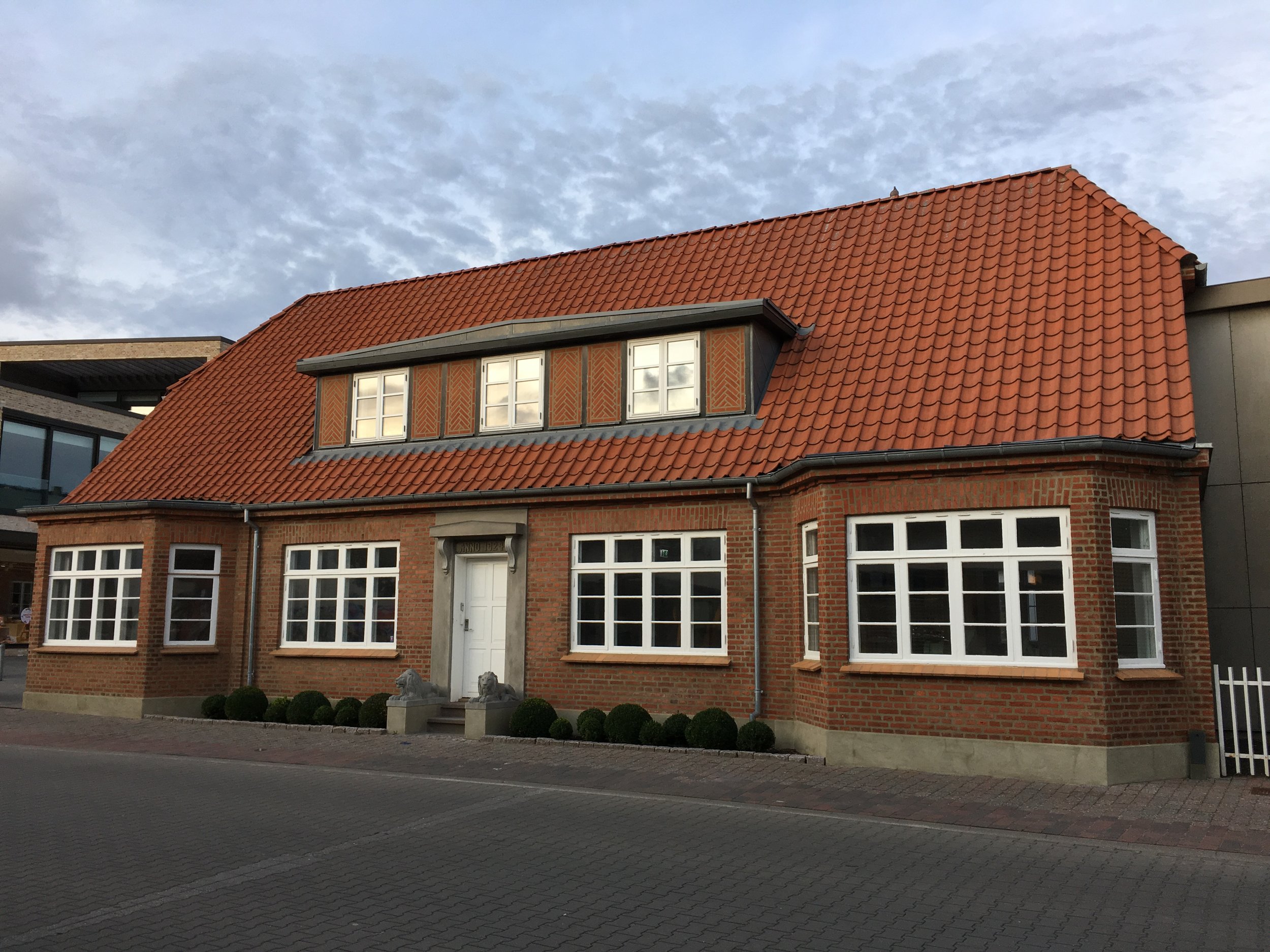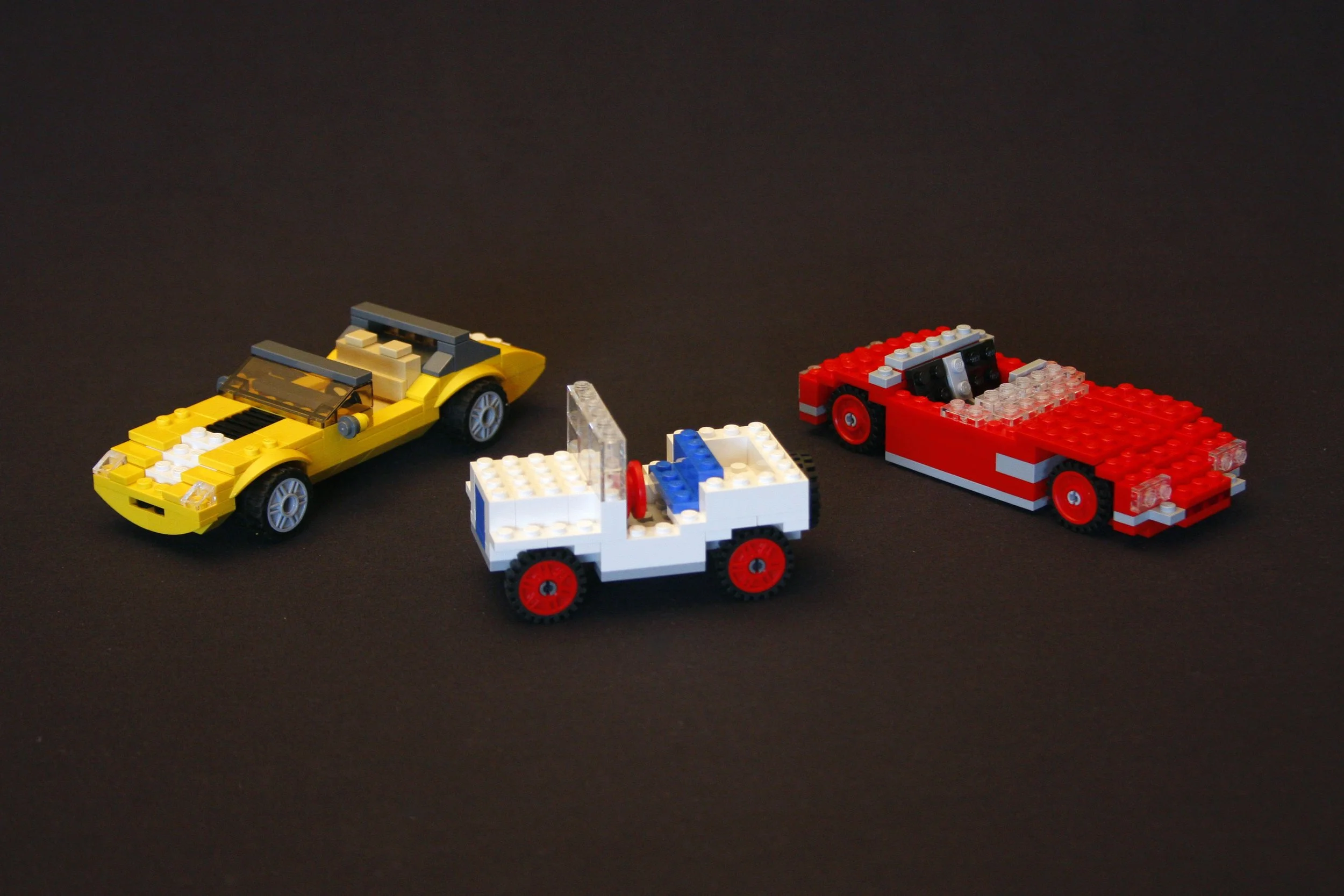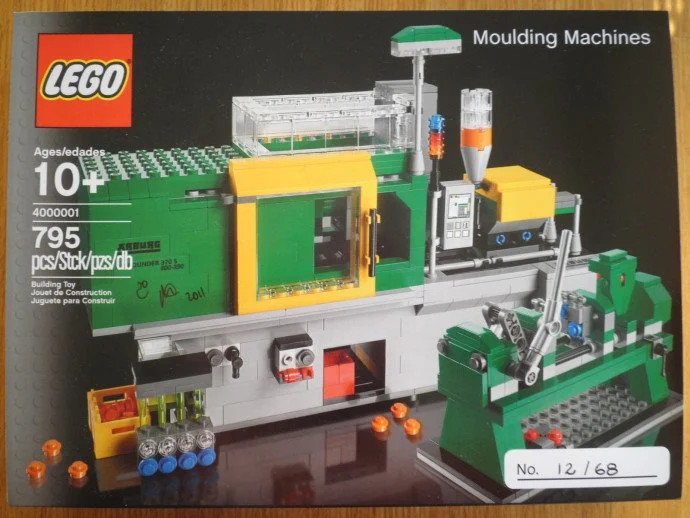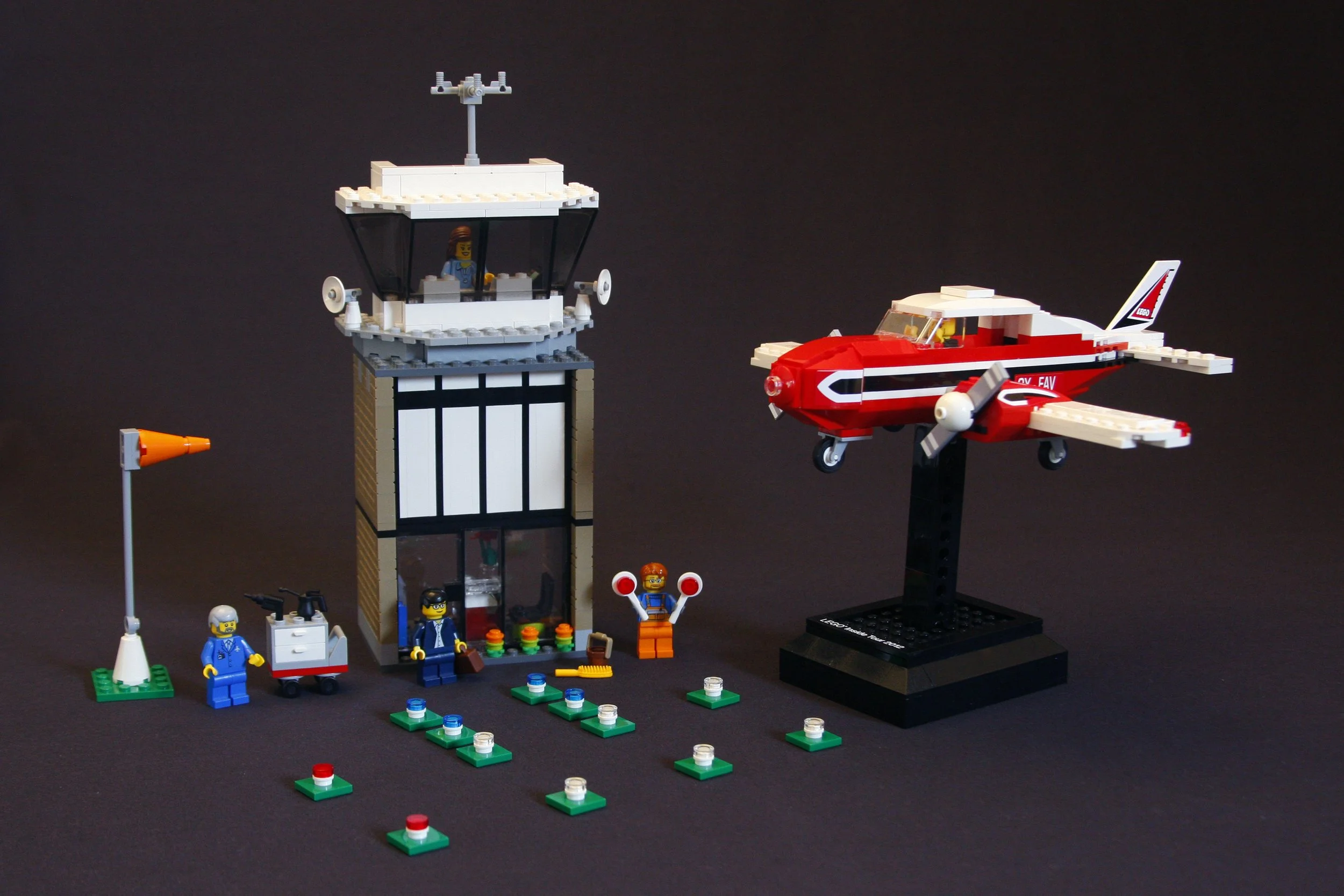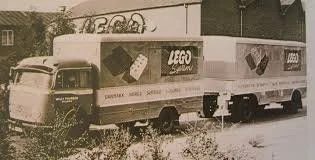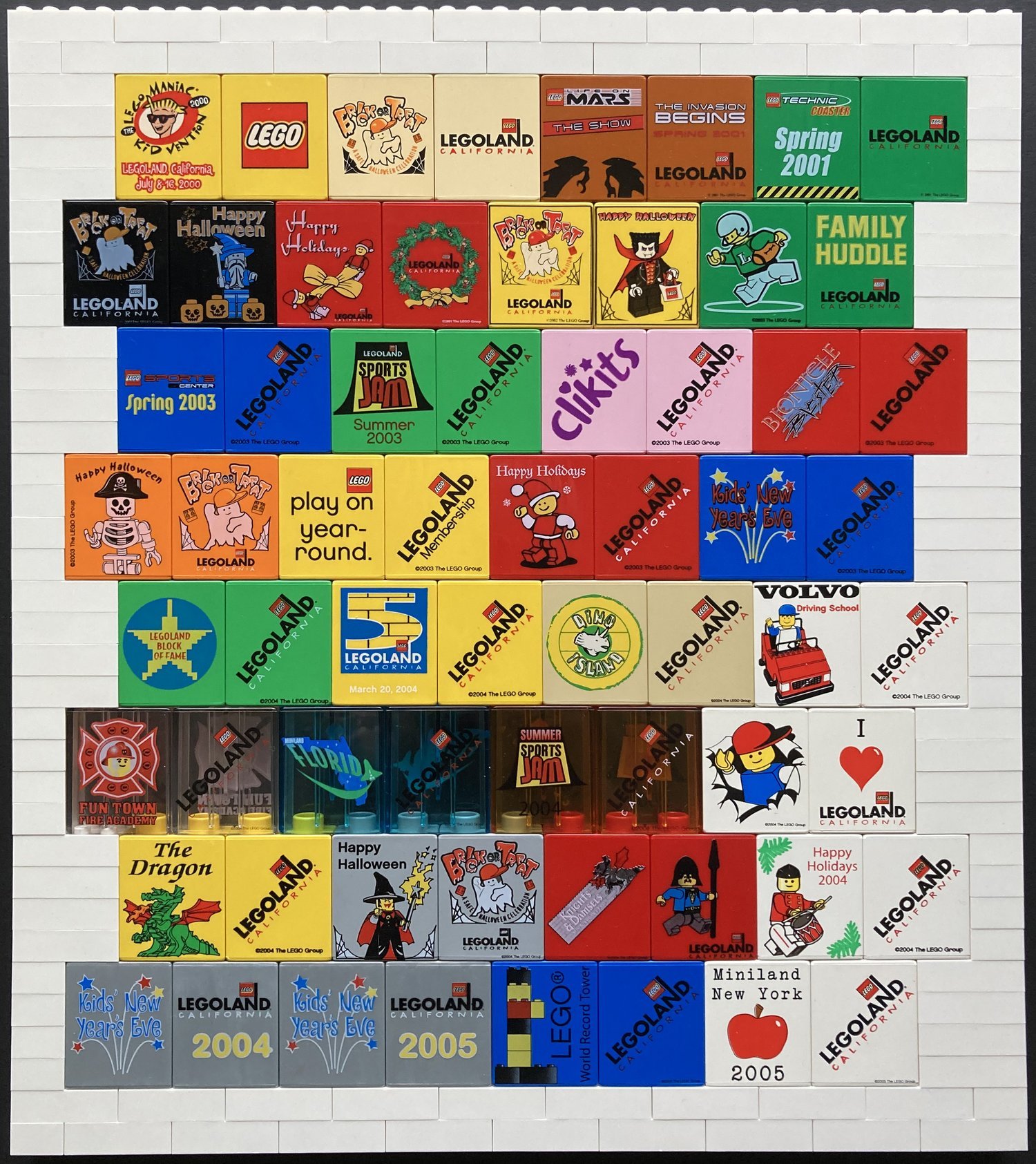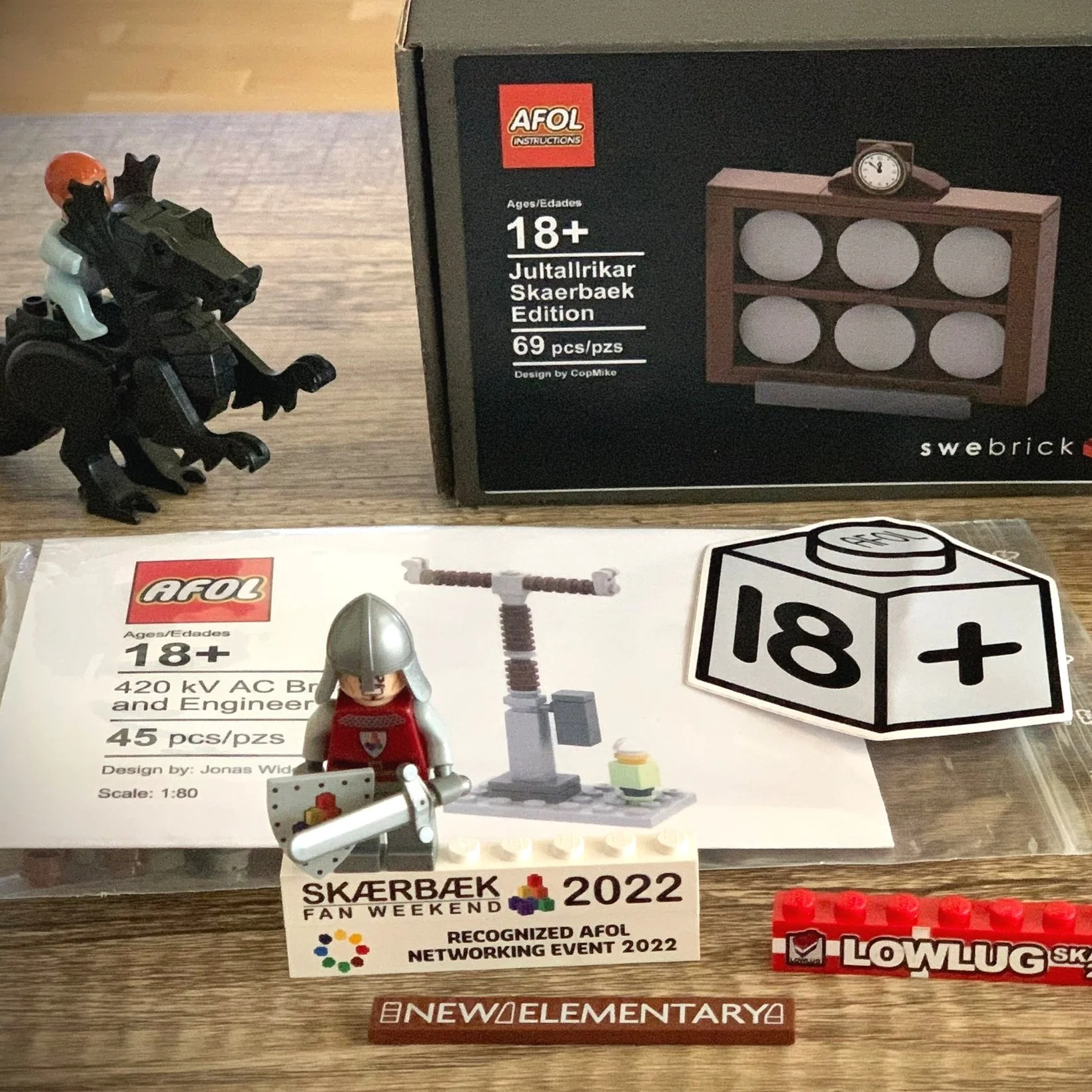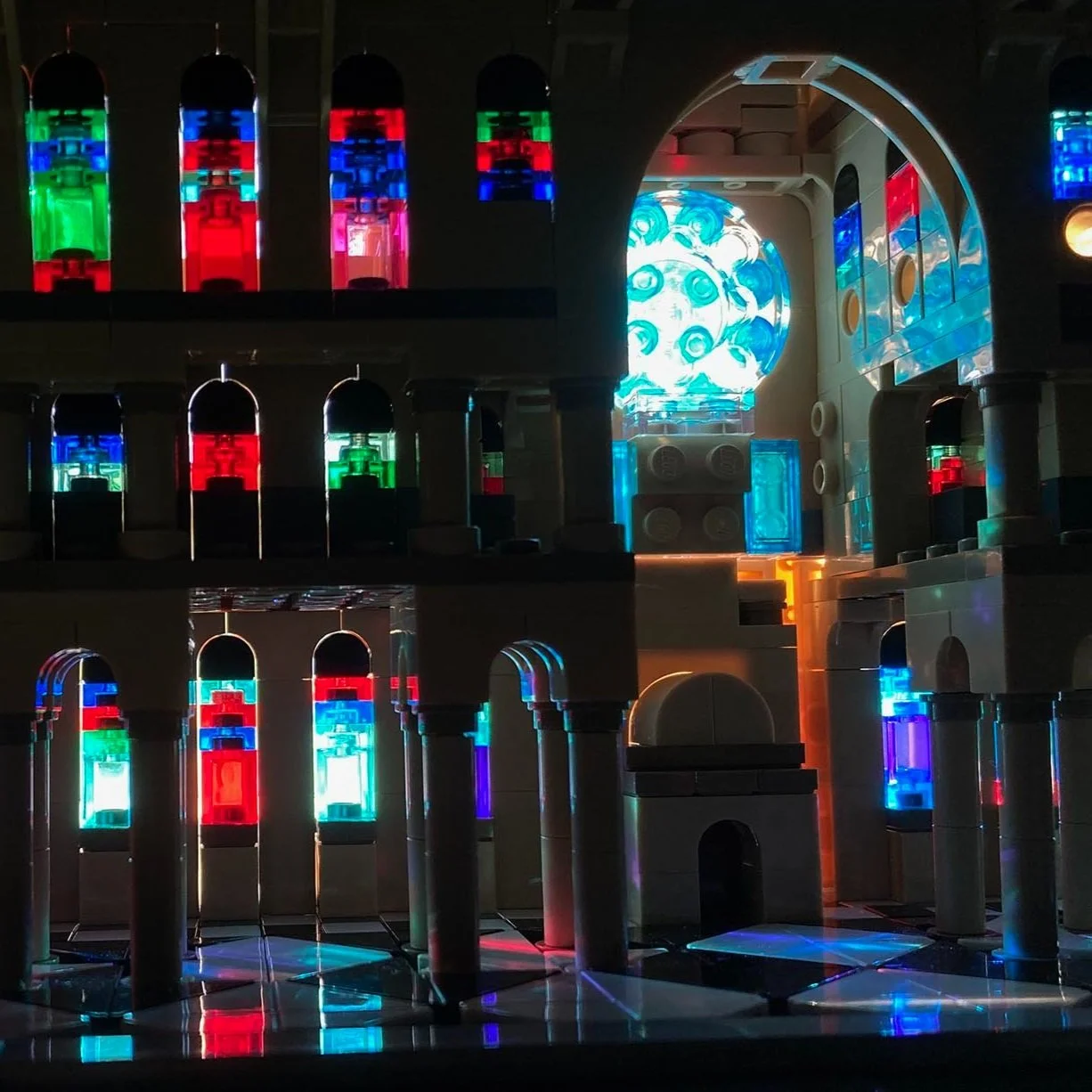LEGO Inside Tour Exclusives: Once In a Lifetime Souvenir Sets
/Best of BrickNerd: Weekend Highlight — Article originally published December 13, 2021.
The LEGO Inside Tour (LIT) is most often described by hardcore LEGO fans with the phrase “a once in a lifetime experience.” The LIT can be summarized as a two-and-a-half-day VIP experience for LEGO fans in Billund, Denmark, the home of LEGO. In recent years there have been four tour groups per year, with about 35 guests per tour. The tour includes meeting executives and designers, visiting factories and LEGOLAND, getting to build with unlimited pieces, a private experience at the LEGO House, and much, much more.
The LIT experience is worth a separate article on its own, but today we’ll focus on the history of the exclusive sets that participants receive at the end of the tour. These exclusive sets are perhaps some of the rarest LEGO sets that the company makes since they are given away to so few people. They usually represent some aspect of LEGO’s history and are typically numbered by hand. Here are the LEGO Inside Tour models that have been produced in the scrollable gallery below:
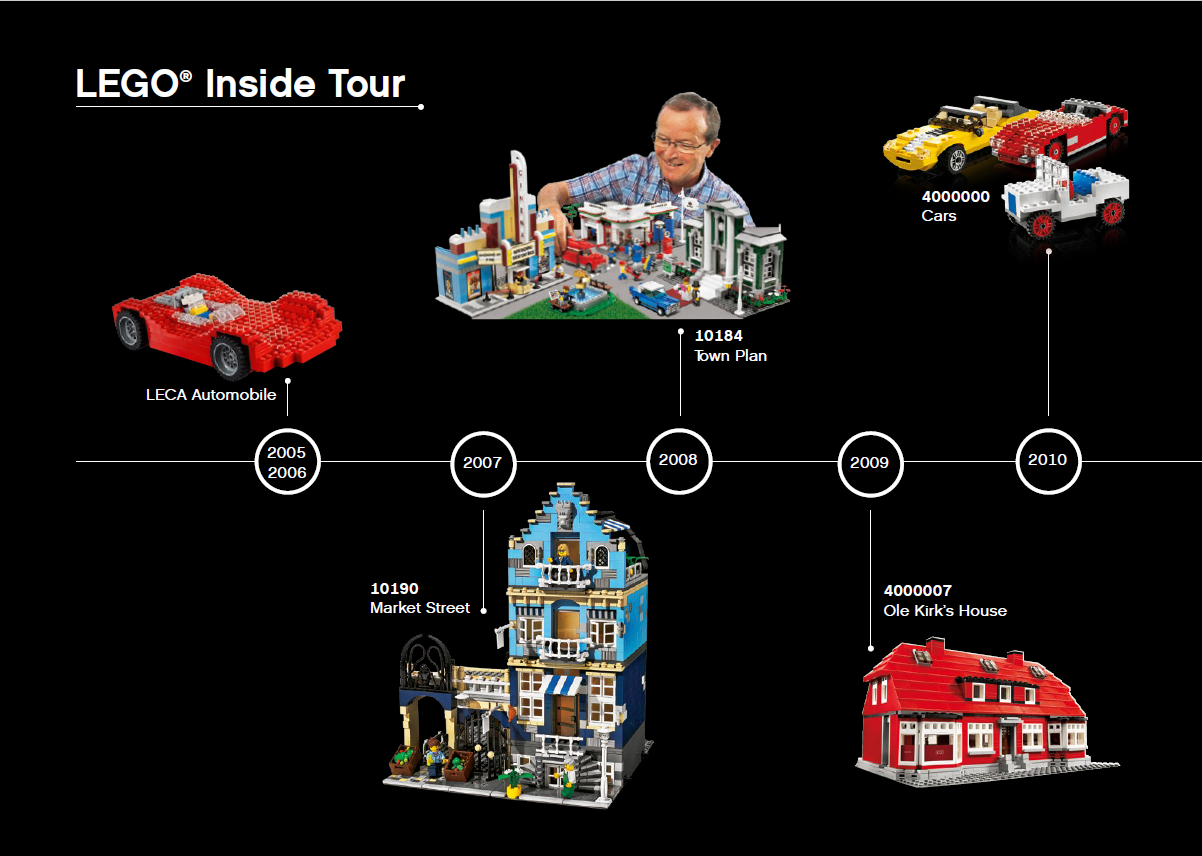
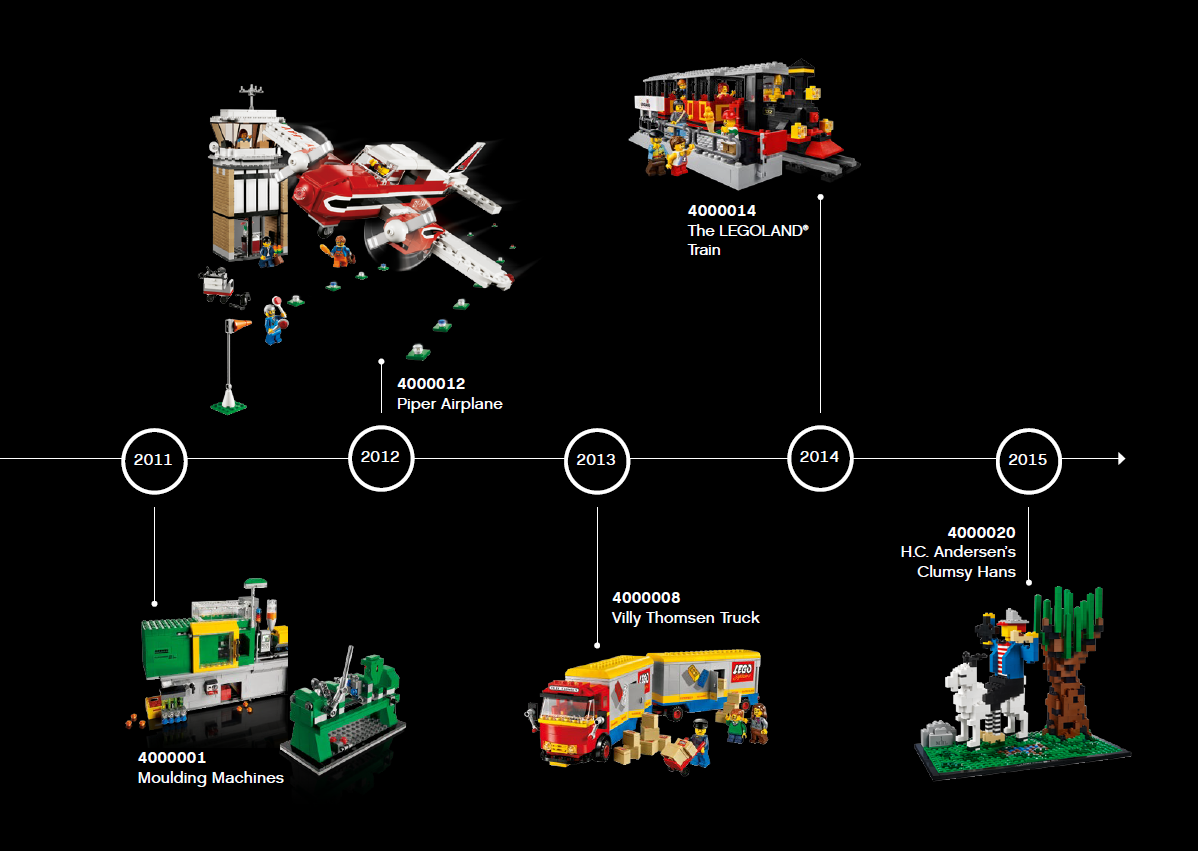

These sets have become a passion for me. Each year when they are revealed, I build a replica model for my collection, either by tracking down instructions or reverse-engineering the model from photographs. So let’s take a stroll through the LEGO Inside Tour models from earliest to latest.
2005/2006 LECA Automobile
This was the very first LIT exclusive set, and was given out during the first two years of the LIT. It is an updated version of a model built by Kjeld Kirk Kristiansen (third generation LEGO owner’s family) in 1962. There are no printed instructions since this was during the LEGO Factory era when LEGO was trying to push digital instructions. Instead, there is a CD with the digital instructions and a short video of Kjeld talking about the original car and the LIT version. LECA is a combination of LEGO and car which Kjeld thought up. The name is somewhat reminiscent of his Grandfather Ole Kirk creating the name LEGO from Leg Godt (“play well” in Danish).
There is a very amusing moment when Kjeld describes being told by the set designer (Henrik Andersen) that designers aren’t allowed to use a construction technique from the original model. (Spoiler alert: the owner of the company prevailed, and the original method was allowed! Can you spot it in the photo?).
The set came in a hand-painted box, authentic to LEGO packaging from the 1960s. The boxes were actually painted by Camilla Torpe and family/friends. The LIT was originally the idea of Camilla, and she took great efforts to make the tour a success. The box also contained the CD and an individually numbered, laser engraved 2 x 6 brick which could be built into the model as a license plate. This was the only unique part in the set, which contains 251 parts.
Little did they know that this model would start a whole line of fantastic exclusives.
2007 Market Street (10190 )/2008 Town Plan (10184)
For the second and third LIT sets, we take a little detour from the small-production sets we know of today. Looking back, these two sets are perhaps the low point of the LIT exclusives even though they may have the highest part count (1,236 and 1,948 respectively).
As you can see, both are essentially retail sets with an added sleeve around the box which was unique to the LIT. I don’t know specifics, but perhaps they were distributed to LIT participants prior to the broader retail release. Both are fine sets in their own right, but not the type of “exclusive” sets people expect today. They included printed instructions and there were no unique parts since the contents were identical to retail sets. The tradition of a custom sleeve has continued, however, with many modern LIT sets receiving a sleeve with a photo of the LIT group printed on the custom sleeve.
via BrickLink
via BricksCulture
Normally LIT attendees are proud of their sets and post many photos online. The fragment of the Town Plan box/sleeve (above right) is the only photo I could find of the LIT version! If you have either of these from the LEGO Inside Tour, let us know in the comments.
2009 Ole Kirk’s House (4000007)
The next exclusive model became a fast fan favorite. This was a nice model of Ole Kirk’s house (the founder of LEGO), which has been in Billund, Denmark since 1924. It is known locally as the Lion House for two lion statues flanking the front entrance. The interior of the house is now part of the LEGO Idea House, a private history museum (and secret LEGO vault) for employees and VIP guests. The model is just an exterior model with no interior details, slightly smaller than Minifigure scale.
There are some nice half-stud offset building techniques used in the construction and it looks good from all 360-degrees around it. It came with printed instructions and a unique sticker sheet. Steen Sig Andersen designed the model which has 910 parts.
When this set was released as part of the LIT, there was not a traditional set number. It was assigned 4000007 in 2012 when the set was reissued as a holiday gift for LEGO employees. This was the first of four LIT true exclusives that were reissued, making it a bit more widely available.
2010 Cars (4000000)
From buildings back to cars, the idea behind this set was to represent the evolution of LEGO car design. The white car (likely a Jeep) is a recreation from set 330 designed by Kjeld in 1968 and represents early basic designs. The red car is based on the style of cars Kjeld used to design for his own enjoyment. It represents a more refined style, while still using basic bricks and plates. The yellow car represents a modern design style, using curved slopes and various SNOT techniques.
The three cars were individually bagged and had separate instruction books within the box. I’m not aware of any exclusive parts in the set. Steen Sig Andersen again designed the models which have 407 parts. My replica pictured above is reverse-engineered from photos since I have been unable to locate any original instructions. (LEGO does not typically make these available online.)
2011 Moulding Machines (4000001)
The Moulding Machines set is certainly one of my favorites. It has two models: a manually operated machine from the 1940s/50s, and a more modern 2000s era machine. Both models have some limited play functions, which adds to the designs. There are separate instruction books and a sticker sheet for the larger machine. Steen Sig Andersen and Mel Caddick designed the models, which have 795 parts.
via BrickSet
The smaller model includes two interchangeable “moulds”, one with red and the other with blue elements being moulded. I departed from the box photo and built my replica with the red mould in use, since there is red ABS in the hopper. My replica is reverse-engineered since I have been unable to locate original instructions. (Again, if anyone can help with any of the missing instructions, PLEASE contact me!).
While this LIT model is virtually unobtainable, another excellent moulding machine was created as a LEGO House exclusive as part of their history product line. The LEGO House set (40502) was designed by Stuart Harris (sketch model) and Markus Rollbüler.
2012 Piper Airplane (4000012)
Back to vehicles, this is a model of the LEGO company’s first corporate airplane, a Piper Aztec (not counting a Piper Apache which was only 50% owned by LEGO). The plane was purchased in 1962 and is still owned by LEGO—although it has been retired and is now in a museum. The Billund airport was also created in 1962 and was run by LEGO until 1964 when it was turned over to the public airport authority. The 900-meter airfield has grown into the second busiest international airport in Denmark. The control tower/terminal building likely represents a depiction of the airport from an early era (1970s?).
The set includes a unique sticker sheet and a printed tile on the plane’s display stand. I was able to have a friend make an engraved tile replica, and my model uses an aftermarket sticker sheet. Mel Caddick designed the model which has 795 parts.
2013 Villy Thomsen Truck (4000008)
The last model we are going to take a look at today is also a vehicle, but is perhaps the set with the most LEGO logos of all time (not counting studs). This model depicts a truck purchased by LEGO in 1958. For business reasons (outsourcing), it was later sold to the Villy Thomsen trucking company but was still used exclusively for transporting LEGO, primarily to Germany. Like the original truck, the stickers have a mix of “Villy” and “Willy”. No one knows if it was a mistake or if it had to do with regional pronunciation practices.
via doktor-brick
The model was designed by Henrik Andersen and has 355 parts, plus an extensive exclusive sticker sheet (mine are a photocopy). While I’m pretty sure the truck was only used for wholesale deliveries, the model depicts a lucky boy receiving a dream delivery of LEGO!
We’ll take a pause here before we enter in the more modern era of LEGO Inside Tour sets in Part 2 coming soon. [EDIT: Part 2 is now available!] Early LIT sets have a special wonder about them since many are so simple, yet so profoundly simple and rare. They represent the roots of the company, where they came from, and where they are headed next. You can see why I’ve tried to replicate so many for my collection—a necessity until I was able to go on the tour myself… but that is a story for next time!
Do you have any LEGO Inside Tour sets and are willing to share the instructions? Let us know in the comments below.
Do you want to help BrickNerd continue publishing articles like this one? Become a top patron like Charlie Stephens, Marc & Liz Puleo, Paige Mueller, Rob Klingberg from Brickstuff, John & Joshua Hanlon from Beyond the Brick, Megan Lum, Andy Price, John A. and Lukas Kurth from StoneWars to show your support, get early access, exclusive swag and more.






